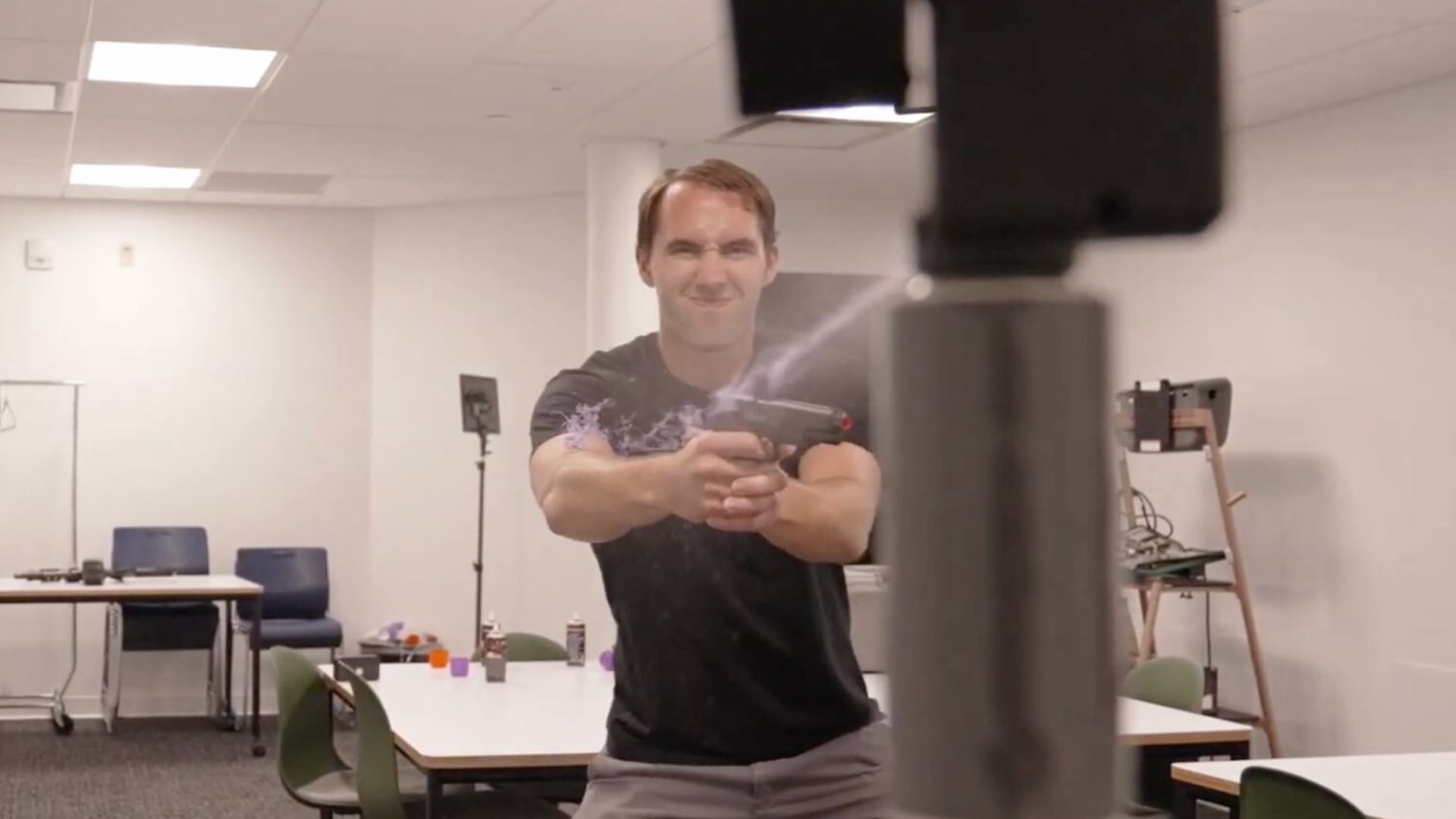Cruise, the autonomous-vehicle company backed by General Motors and Honda, unveiled the Origin on Tuesday which it says is the first self-driving vehicle designed from the ground-up to get from here to there without a driver.
With no steering wheel, no pedals – no place even for a driver – the seats face one another, in what one Cruise spokesperson called a “campfire” arrangement.
In the lead-up to the unveiling, a Cruise spokesman pointedly avoiding referring to the vehicle as a “car,” and CEO Dan Ammann continued the theme at the vehicle’s unveiling.
“What we’re going to show you today is not an improvement on the car – it’s completely different, and it’s what you would build if there were no cars,” Ammann said, just before the stage doors behind him slid open to reveal the vehicle. “It is self-driven. It is all-electric. It is shared. It is not a concept. It is a production vehicle and we have it here today.”
Production locations will be announced in the “coming days,” Ammann said.
“At scale, we expect to produce it for roughly half the cost of what a conventional SUV costs today,” Ammann said. “The Cruise Origin will have a lifespan of well over 1 million miles.”
The company began teasing the release as early as Dec. 11, when CEO Dan Ammann published a blog post titled, “We Need to Move Beyond the Car,” and declaring “that the status quo of transportation is broken.”
“That’s why at Cruise it is our mission to improve safety by removing the human driver, reduce emissions by being all-electric, and reduce congestion through making shared rides more compelling by providing an awesome experience at a radically lower cost,” Ammann wrote.
Earlier this month, the company sought to build on the hype by erasing its Instagram posts and replacing them with the GPS coordinates of other major transportation innovations like the steam locomotive and the internal combustion engine – at least, according to automotive reporters and internet sleuths who worked to decipher the messages.
Cruise last May submitted a petition that would allow it to test vehicles lacking steering wheels or pedals on public streets. The company’s AVs had been set to start driving the streets of San Francisco by the end of last year – two years before the anticipated release of AV competitors from the self-driving company Argo, which has backing from Ford. Though, the company last summer announced that the release would be postponed “in order to reach the level of performance and safety validation required to deploy a fully driverless service in San Francisco.”
Cruise has been testing about 200 vehicles in the city. Argo meanwhile is testing its vehicles in Austin, Detroit, Miami, Palo Alto, Pittsburgh, and Washington, while Waymo – backed by Google – is testing in Phoenix and in California.
Assuring consumers about the safety of driverless vehicles will remain a central challenge for the AV automakers, experts say. Self-driving technology has been involved in at least five fatal collisions in the U.S. since 2016: four involving a Tesla being driven with Autopilot engaged and one in 2018 involving the ride-hailing service Uber's self-driving test vehicles.
The probe of the 2018 Uber ($UBER) crash in Arizona sparked particular alarm – the investigation revealed that the company’s self-driving vehicles were not programmed to recognize that people often cross the street outside a crosswalk.
Consumer advocacy groups have meanwhile argued that the federal government is not doing enough to ensure the safety of the vehicles. The Trump administration on Jan. 8 released the latest round of autonomous vehicle guidance, referred to as “AV 4.0,” which kept the guidelines voluntary rather than mandatory, provoking an outcry.
"Voluntary guidelines are completely unenforceable, will not result in adequate performance standards and fall well-short of the safeguards that are necessary to protect the public," Cathy Chase, President of Advocates for Highway and Auto Safety, said in a statement after the benchmarks were released.
The Transportation Department has maintained that the guidelines ensure safety while promoting flexibility and innovation.
Cruise’s own co-founder and CTO, Kyle Vogt, weighed in on the issue of safety and regulation as recently as last week. In a blog post, he criticized a California requirement that AV companies testing their vehicles on public roads report the number of times that drivers had to take the wheel. Tallying such “disengagements” of vehicles’ autonomous features, he said, isn’t an accurate metric of AV safety.
“The AV industry is in a trust race, so it’s important that we do things to build confidence in the technology,” Vogt wrote. “After extensive testing in complex urban environments, we’ve come to realize there’s a threshold of environmental complexity above which it’s nearly impossible for even a well-trained, attentive, and responsive human to avoid touching the wheel. Said another way, even if the AV was 100x better at driving than a human, rides through places like downtown SF will still regularly generate disengagements. As a result, disengagement-free driving is not actually a prerequisite for commercial deployment of AVs.”
Cruise last year was valued at close to $20 billion, with major investments from GM and Honda, as well as T. Rowe Price and SoftBank.
Updated with vehicle details and quotes from the event.












